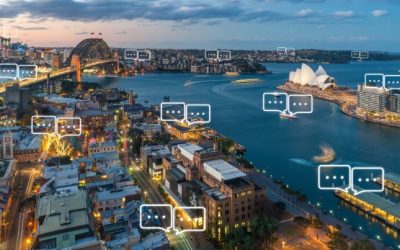Healthcare is serious business. But that doesn’t mean patients can’t play around with better health choices. As the healthcare industry uses technology to continue its crusade toward streamlined patient care and expanded preventive care methods, some experts believe its “game over” for traditional fragmented, fear-mongering approaches to health.
Some healthcare industry leaders believe it’s game on to improve patient care and promote better health.
Gamification is reaching higher levels both in the training of medical students and inpatient care. According to research, the global healthcare gamification market, valued at $25.3 million in 2020, is expected to reach a booming $65.1 billion by 2027.
“The recent COVID-19 pandemic has provided a lot of opportunities in the healthcare gamification industry from physicians using digital diagnosis, telemedicine to communicate with the patients to consumers using wearable devices to maintain their health,” said research authors Sunil Punjabi and Dr. Shruti Rastogi.
Communities experienced a version of this technology during the height of the pandemic as elements of gamification helped transmit information to areas all over the world. Now, the appeal of gamifying healthcare is spreading as patients take more control over their healthcare decisions, and future healthcare providers use it to expand and reinforce their medical knowledge.
Let’s summarize how gamification is scoring big in transforming current patient care and how it’s impacting future healthcare providers.
Gamification empowers today’s patients
To say that healthcare plays a significant role in people’s lives is like saying “The Batman” was a “pretty good” movie. The rapid and often transformative changes in work and school environments, economic concerns, and lifestyle changes compelled many people to invest more in their overall health. While technology responded to the immediate need for providers to connect with patients via telemedicine, for example, patients also turned to apps to support better health.
“If you measure your daily step count or document the number of calories you take a day, you are already using gamification for the betterment of your health,” explains digital health experts.
“Many medical software development companies are providing users with different sorts of gamified healthcare apps, aiming to improve their health care issues.”
In addition to the motivational support for patients, these applications generate valuable data for healthcare networks to make informed, metrics-based decisions about future healthcare strategies.
“Gamification can advance big data into smart data,” says Dr. Mark Van Rijmenam. “Personalized and relevant feedback based on the choices made in the gamified context will increase the interaction and draw a user more into a big data dashboard. This will result in more involvement and interest in data-driven insights and thus better decision-making.”
Van Rijmenam pointed out the strategic similarities between big data and gamifying apps.” One could even say that gamification is the friendly scout of big data, gathering data from literally 1000s of potential actions that can be measured, but in a user-friendly and engaging manner.”
He added that if visualized strategically, insights from a well-executed gamification platform can provide valuable insights that impact an organization’s current care delivery infrastructure and the knowledge base of those who will utilize it.
Gamification helps prepare future healthcare providers
Could this mean “game over” for traditional teaching methods?
Much like the healthcare industry faces the need for innovative, interoperable infrastructures, medical schools have embraced new ways to share knowledge and expand learning. And gamifying some parts of the medical training curriculum is one of them.
What started as a quick response to COVID restrictions and the need for new ways to deliver care, gamified digital-based teaching tools are becoming an effective tool for medical students and doctors who need additional training.
“We need to change the way we train students and be open to evolving by meeting students where they are at with technology,” said James H. Willig, MD, MSPH., a School of Medicine Associate Professor at the University of Alabama Birmingham. “They come in with different experiences with technology than students did 10 or 20 years ago. With gamification comes the opportunity to analyze the ‘data trail’ students leave and determine best practices to enhance knowledge retention through educational analytics.”
Along with his colleagues, Willig designed an online, multiple-choice quiz game called Kaizen to test students’ clinical knowledge. Since its launch in 2012, varying branches of medicine have adopted it as a supplement to their curriculum. For instance, Do-Yeon Cho, M.D., director of Otolaryngology Research at UAB School of Medicine, uses Kaizen to build question banks for otolaryngology residents.
“With gamification, we take aspects of gaming and put it in a learning software.Instead of just classroom settings and learning, we wanted to implement a new option for knowledge base training and assess its impact,” Cho said.
The appeal of gamifying supplemental learning shows in:
Learning that extends beyond the classroom
Gamifying instruction for today’s medical students is what flashcards did for medical students in the past. Students can reinforce learning with a mobile app that quizzes them on an elevator or while waiting in line for a hamburger.
Encourages competition
By nature, med students thrive on competition. By adding a scoring system to the app, students can measure their progress within the class, identify areas that need additional study, and motivate them to reach specific mastery goals.
Simulation improves awareness and preparation
Some apps offer story-driven training. For example, Night Shift, designed for training in emergency room settings, provides role-play games to expose students to triage, patient interaction, and disease management via realistic scenarios. More familiarity with these cases helps students handle actual cases further along in the program.
Is gamification the cure-all for better healthcare? No. As a relatively new technology, there’s plenty of room for improvement. Punjabi pointed out that despite the benefits of using gamification in healthcare, there are some issues surrounding the proper use of this technology.
“Gamification can be exploitative to fulfill the purpose of one party (such as marketing) without benefitting the other,” Punjabi said. And there are concerns about securing data.
But the advantages of expanding learning and training opportunities for students while also encouraging patients to use health and wellness apps to measure basic vitals, exercise, diet, control stress, and sleep better is a healthy step in the right direction toward effective preventive care both for patients and those who care for them.















0 Comments